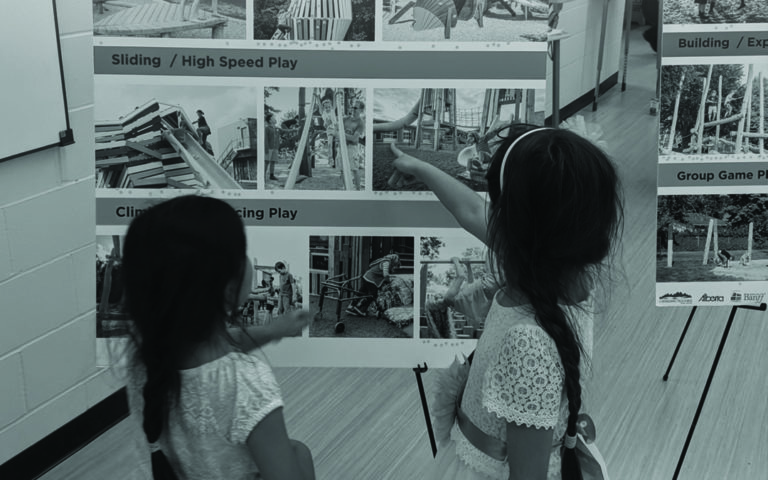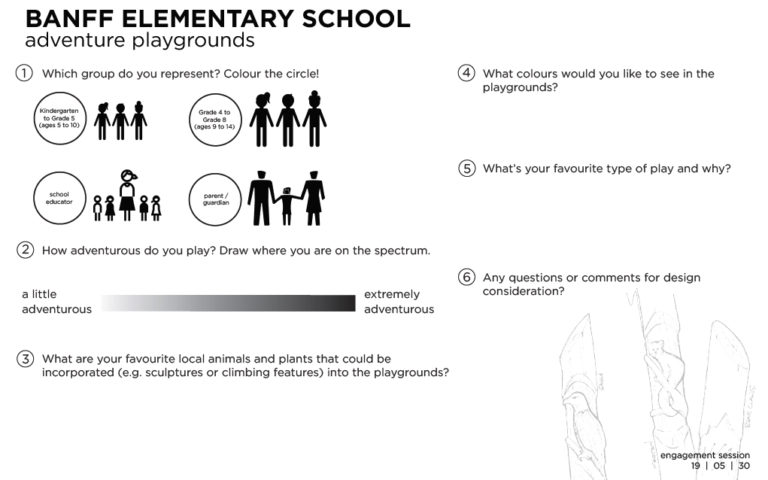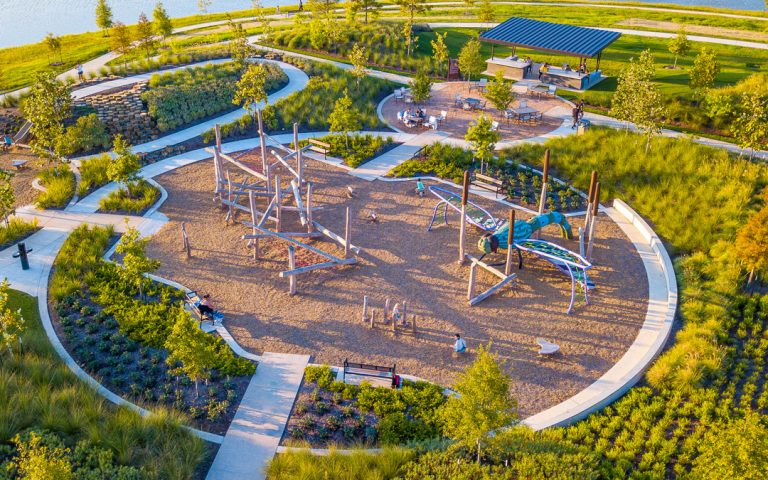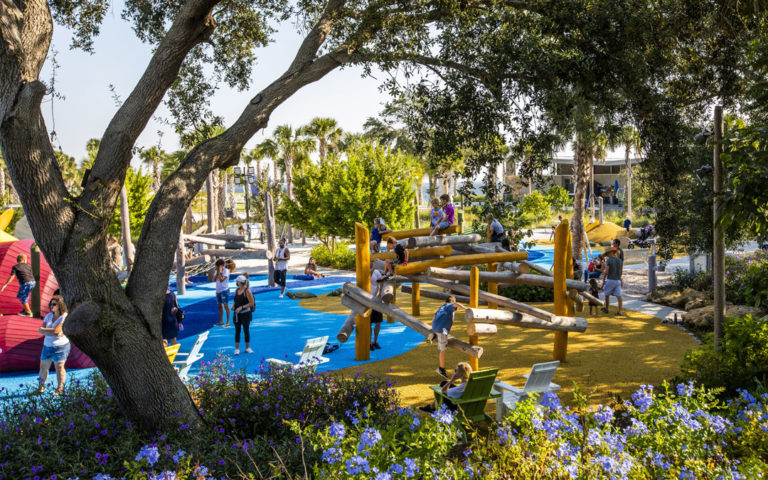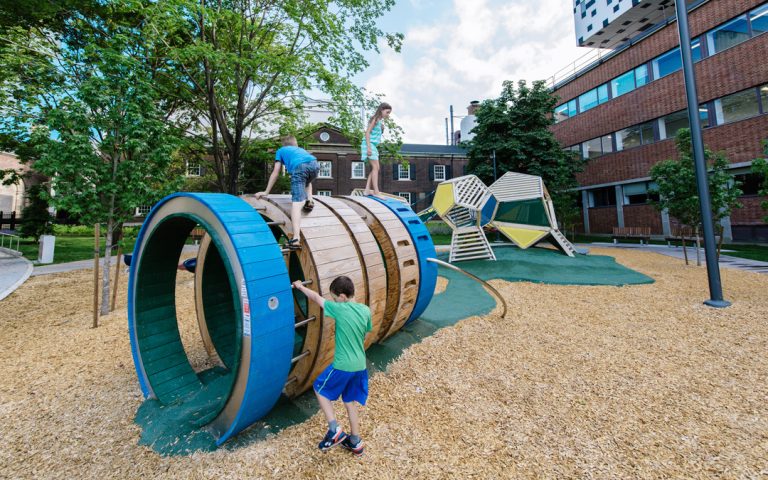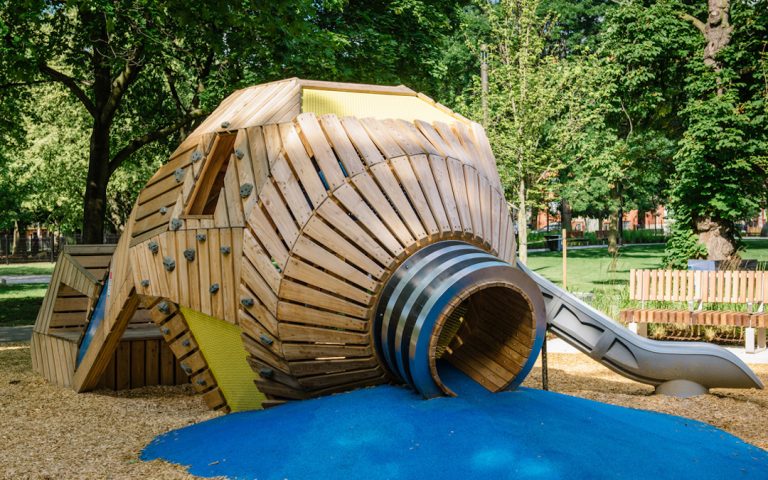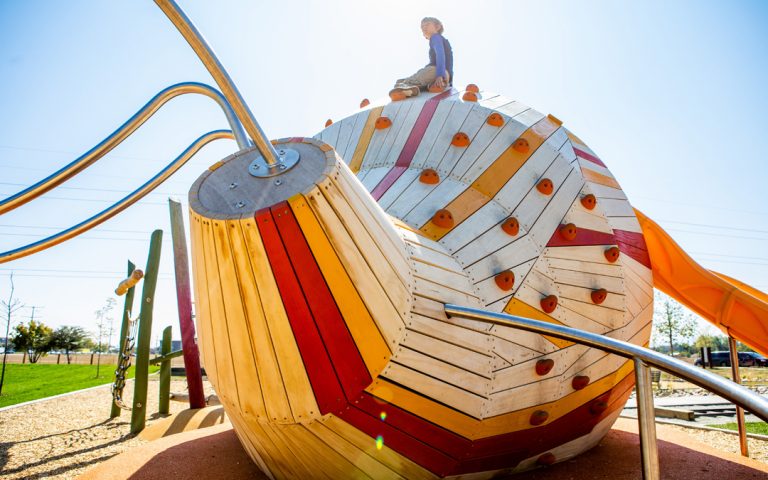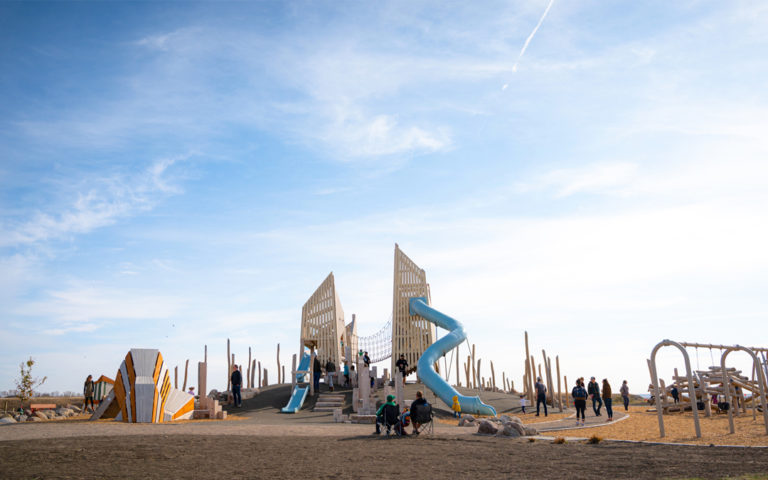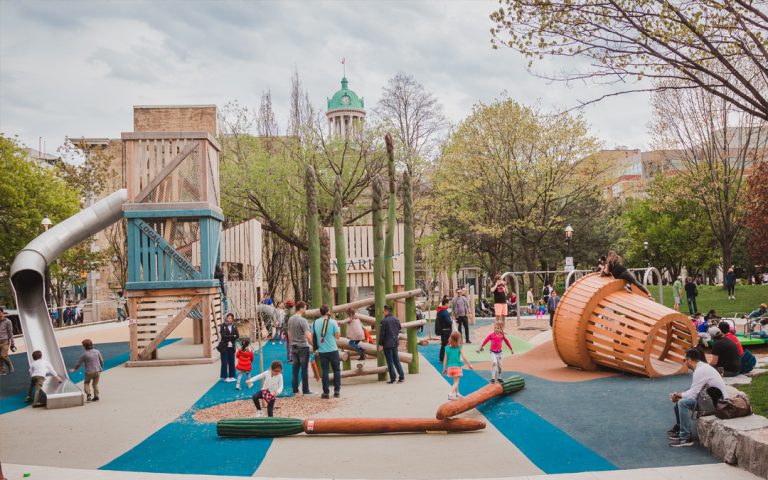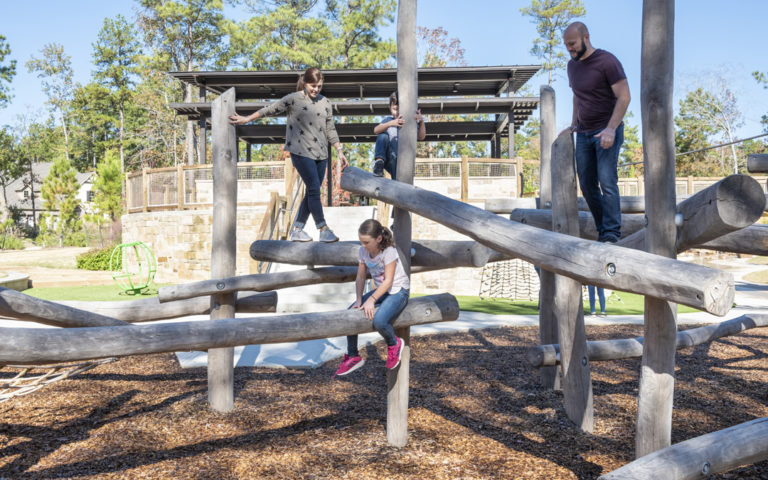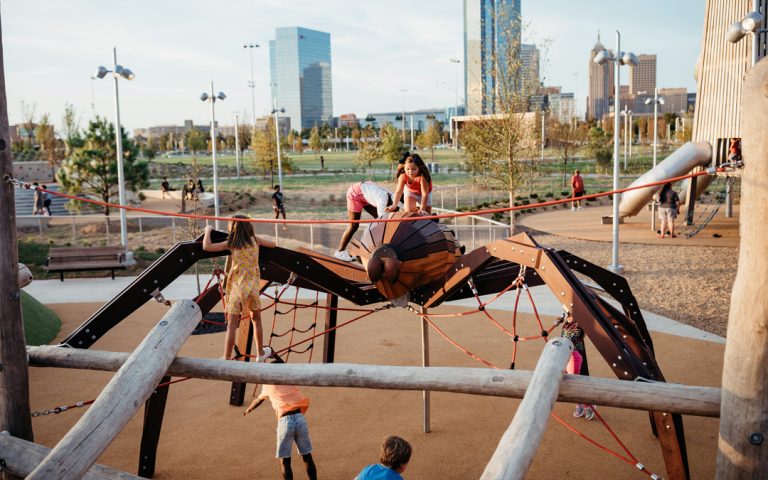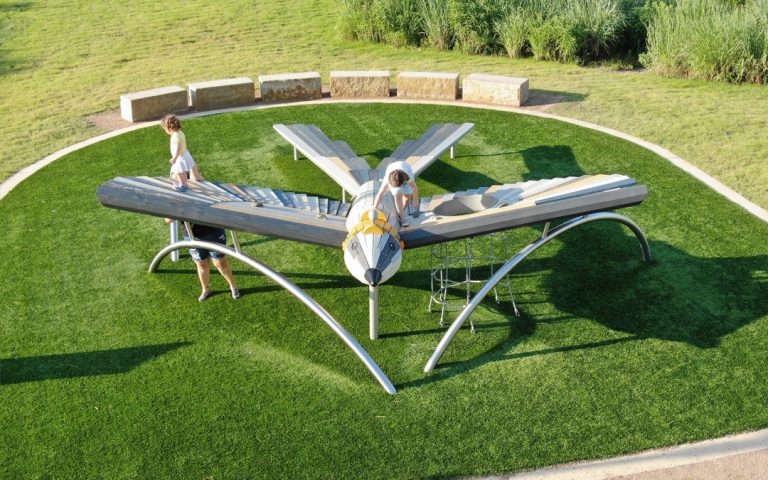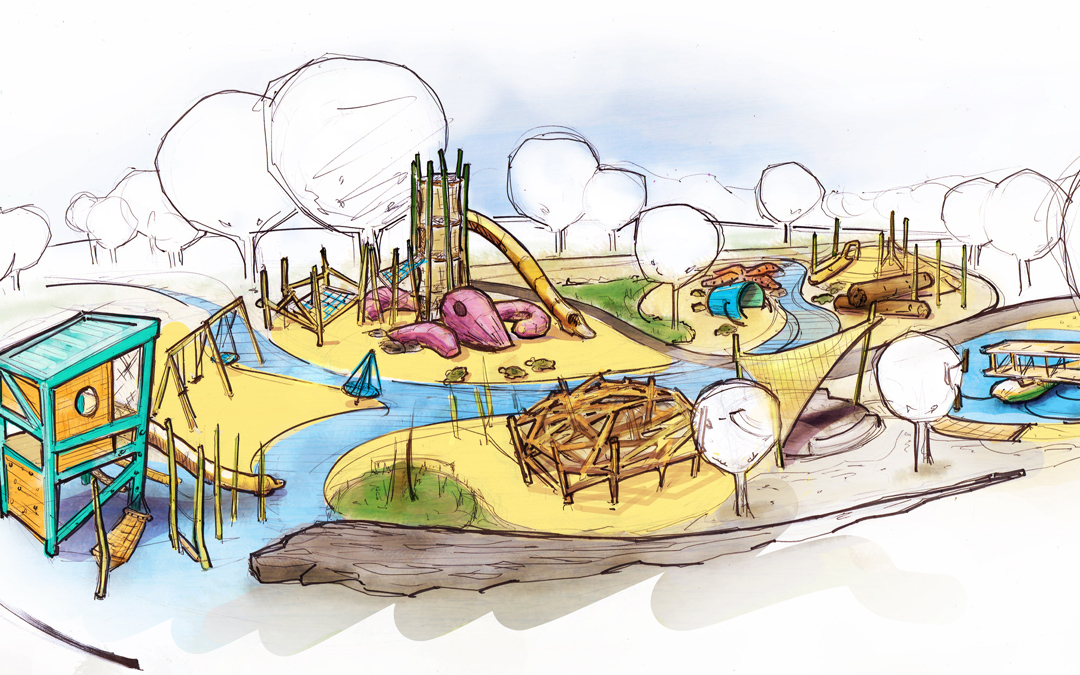
5 Ways to Enhance Placemaking with Play
by Alex Waffle, Playground Design Team Manager
You visit a playground and have the overwhelming sense that its location and design has been an afterthought. It just feels out of place – a perfectly rectangular or square sand box with a group of generic, primary-coloured equipment plunked in. There seems to be no connection to its surroundings, no creative touches, and no sense of identity or place.
Playgrounds like these are a real missed opportunity. While they offer play value, they are somewhat one-dimensional adding very little value to the community beyond the bare minimum expected of playgrounds. Playgrounds are uniquely suited to be incredibly expressive and distinct places; instead of checking off boxes to meet conventional expectations, they can be so much more.
What if a playground were given more attention during the design process? What if it wasn’t just an afterthought or checking off a box? What if it was designed as an engaging, interesting and beautiful aspect of the park, greenspace, community or development? Perhaps it could even be a centrepiece?
Thoughtfully designed playgrounds can contribute enormously to a sense of place. They can be enjoyable gathering spaces where even teens and adults choose to hang out. They can build a sense of community in a new development or renew relationships in an established one.
Here are five ways that Play can enhance placemaking:
1. Engage the community during design
Community engagement isn’t just a buzz word, it’s a critical part of ensuring connection, pride of place and a sense of community ownership. Community engagement is a lot of work, but it can be an incredibly rewarding process. A custom playground may be unlike anything that has been seen or experienced before, so exploring possibilities during community engagement is exciting! Gathering ideas, collecting feedback and ranking choices can help to distill the unique desires of a neighbourhood or region.
When Ground Cubed consulted with kids, parents and teachers at Banff Elementary School about their playground vision, they collected thoughts, feedback and “dots” that allowed kids to visually identify what playground elements were most exciting in their eyes. The results guided the playground design direction and created a buzz about the new playground.
(Images above courtesy of ground cubed)
2. Activate the space
Play doesn’t have to be confined to a playground and playgrounds don’t have to be placed in a square box. Play can be integrated meaningfully into a site – it can be encouraged with topographical changes, a mix of surfacing materials (some of which can be manipulated) or by incorporating non-prescriptive play pieces that invite more interaction by older children, teens, and adults.
Public spaces with people and activity are more inviting that empty spaces. User comfort is also an important consideration. People will linger, connect and enjoy spaces that offer shade, meandering pathways, seating or plants that create a more comfortable environment for everyone. If people are active and regular visitors in a public space, they will develop an attachment, sense of place and community pride.
3. Say something meaningful, interesting, or fun
“Why fit in when you were born to stand out?” – Dr. Seuss
It is often easier to do something expected or ‘normal,’ but when there is opportunity for creativity and fun, why not embrace it? We have done many custom playgrounds that pay homage to a site’s history or hold local meaning to visitors. Next to the Art Gallery of Ontario and OCAD University (Ontario’s Art and Design University) in Toronto, Grange Park’s playground features sculptures that mimic artist tools. At Sugar Beet Park in Fort Collins, Colorado, the City’s economic history of sugar beet production is told through play. At the Wanuskewin Heritage Site in Saskatoon, indigenous stories, history and symbols are woven into the playscape design.
Playgrounds can create incredibly memorable spaces. As playable art, they give meaning, identity and richness. They’re also incredibly fun and magnetically attract citizens to the outdoors to gather as a community. Layers of meaning infused into the design make fun and challenging playgrounds that much more impactful.
4. Broaden the user group
Playgrounds that are interesting and perhaps even enjoyable for adults can draw a broader range of park users. If a playground is appealing to all ages, families with kids will be more motivated to make it a destination. St. James Park in downtown Toronto is a great example of this situation. The Chair of Friends of St. James Park noted that after the playground opened, there were an abundance of families who lived in the immediate neighbourhood who became visible and who now have a space to enjoy themselves – a place to picnic, meet with friends, sit in the shade, people-watch and socialize.
Earthscape playgrounds are known to be particularly engaging and fun for adults to play too – whether it’s tag, parkour or simply a tempting challenge to cross a log jam beam, playgrounds need not be places exclusively for kids.
5. Combine art and play to create a landmark
Public art is often used as an identifying landmark within a community. When you combine public art and play, you can create an engaging or interactive landmark that becomes a destination. Combining art and play budgets together could create one amazing experience that is not only visually stimulating, but also physically engaging. If space is at a premium, the combination of art and play is a multipurpose win-win for owners and visitors.
The wolf spider at Scissortail Park in Oklahoma is an example where sculpture and play meet. A bird sculpture at a large development in Texas was built with funding for public art. The resulting sculpture meets the aesthetic goal of representing local wildlife with the added value of play.
According to the Urban Land Institute, seven in 10 Americans say the arts have improved not only the quality and livability of their community, but also its image and identity (ULI 2020). Public art enhances existing neighborhoods, attracts residents to new developments, and – when skillfully employed – transforms a place to a destination. It can be used strategically for community building and placemaking. Public art that is engaging has been particularly successful at creating dynamic public spaces. It is common to bring play into art, why not also bring art into play?
A playground has the potential to be so much more than checking a box. The same attention given to outdoor public spaces can similarly be given to playgrounds. Integrative and holistic urban design doesn’t need to stop at the playground. We should be asking more of these places, making them features that truly contribute to the vibrancy and identities of our communities.

